Good Access is Good Business
Helping getaboutable.com to pivot from B2C to B2B website
Overview:
By implementing UX research, design and writing, an accessibility consultancy company’s website was reviewed and redesigned for increased qualified lead.
Project:
General Assembly | GetAboutAble
Internship - Student Project
Completion:
29/01/24 - 09/03/24 (6 weeks)
My role:
- End to end UX researcher & UI designer
- UX writer
- Project management
- Stakeholder management
- Collaboration facilitator
Tools:
- Figma
- Figjam
- Dovetail
- Notion
- Slack
- Google workspace
Team:
Kristy F.
Jeffrey C.
Leandro C.
Case Study Sections
Click on the links below to jump to section 👇🏻
1. Client, Project Brief and Outcomes
The Client
GetAboutAble (GAA) is a leading Australian accessible tourism consultancy, supporting tourism businesses to improve their access and inclusion practises.
GetAboutAble have been offering services to both travellers with access needs and tourism business. They are now pivoting their focus to working with tourism businesses which require assistance with accessibility and inclusion practises.
They are one of the very few companies that cover all disabilities.
90% of client’s team have lived experience with a disability or are a carer.
Target users tend to be decision makers like managers, rather than frontline staff, seeking help getting started with accessibility and inclusion.
Metrics to track success include lead quality and quantity, eventual service sales, and traffic and time spent on key pages.
Client’s Insights
Client’s Goals
”For the website to drive qualified leads and sales for GetAboutAble's B2B services through clear messaging and easy navigation.”
UX Team Objectives
Provide a solution that clearly conveys the shift in focus to B2B services, increasing qualified connections through the website, therefore boosting commercial outcomes
Prototype Features
The main prototype features were:
Refreshed website look adhering to colour contrast standards, passing WCAG contrast test and minimised use of different font sizes
Selective choice of imagery used to improve sentiment
Pivotal website design to focus users’ attention to the B2B services through revised information architecture
UX writing and content strategy to clearly communicate to users the client’s B2B services.
Project Outcomes
UX Research brought forward that:
UX writing and content from the client’s original website increased cognitive load and frustrations
Users need video and photographic proof of the client’s work to build credibility and trust in the brand
There is a market opportunity and potential for development of further product / UX service design
The website prototype developed allowed for less cognitive challenge for the users, betterment of sentiment to contact the client to enquire about B2B services and increased confidence of the client’s business standard.
2. Research, Findings & Synthesis
Research : Observe, Learn and Road Map to Solutions
Where to start ?
To guide our research, the UX team started off by getting ourselves familiar to the client’s website and identifying mutual assumptions about the industry, user and product. Using an assumption map, we noted that we assumed that:
The purpose of the GetAboutAble website is unclear
Users want to learn how to provide services/ products that are accessible and inclusive
Users want to provide a culture of inclusion for customers and/ or staff
Users are overwhelmed by the amount of change, work and cost required to implement accessibility and inclusion practices
USERS’ BEHAVIOUR AND EXPERIENCE
What are the existing accessibility and inclusivity practices implemented by tourism businesses and why?
How do potential customers make decisions when adopting consultancy services?
How do businesses gather information regarding accessibility/inclusion and reach out for consultancy services?
To design a solution which would meet the requirements of the client and users, it was crucial top assess what users needed as well as test the team’s assumptions.
USERS’ MOTIVATIONS
What are businesses goals and objectives in relation to accessibility and inclusivity?
What are the specific motivations that drive potential customers to seek consultancy services?
What are the perceived benefits and advantages that potential customers expect from implementing accessible and inclusive practices?
Research Goals
USERS’ PAIN POINTS
What are the potential challenges that businesses may face when implementing or considering accessible and inclusive practices?
What are the perceived barriers to entry or engagement with consultancy services?
Target Audience
Australian based businesses operating in the tourism industry that could be potential customers for GetAboutAble.
-
Restaurants
Hotels
Tour Operators
National Parks
Event Organisers
Theatre Companies
Government Organisations
Research Method
To gain a thorough understanding of our client’s potential users, the team conducted several layers of research. Read more below.
-
Extensive online research on accessibility and inclusion consultancy companies and practices, and tourism to gauge the market and market trends.
-
6 Competitors
4 Comparators
-
A additional task given by the client was to conduct an Accessibility Audit of their current Website.
The UXD team used the audit findings in the product design and made recommendations to the client on areas of improvement.
-
4 sites were visited to verify information gathered
-
Originial GetAboutAble Website usability testing with 8 participants
-
Out of 119 businesses contacted 27 participated.
Market Research
From online research, the team found out that Accessible Tourism in Australia was valued at A$13.5 billion (US$8.9 billion) in 2021, compared to just over A$10 billion before the pandemic. The growth of the accessible tourism market is being driven by the following key factors:
New technologies opening up greater opportunities for people with a disability
The ageing population
Cultural Change and shift in mindset
In addition to the above, the purchasing power of people with disabilities - the purple dollar - has been growing other the years globally, and nationally. Consequently, businesses are becoming aware of this market opportunity available to be harnessed.
GetABoutABle SWOT Analysis
From the SWOT analysis, our team came to appreciate that our client is a bit of a unicorn sitting between the tourism space (B2C) and disability consulting space (B2B).
The market trends, increased awareness and cultural shift of embracing communities with disabilities within the industry are tremendous potentials for our client to focus on their B2B disability and inclusion consulting services.
Websites Plus and Delta
& Feature Analysis
Insights of 5 competitors assessment:
All 5 had strong positive imagery specific to the business which created a connection
In contrast, GAA used a mix of stock photos and sparse professional photos from the company.4 / 5 sites:
- provided visible proof of their work through case studies and testimonials
- highlighted the importance of lived experience in their workplace
- provided breadcrumbs which allow users to navigate in the websites2 / 5 UX writing to describe "information about our team” was “about us”;
2 / 5 was “about”
1 / 5 was “who we are”While GetAboutUs used “who we are”.
Insights of 4 comparators assessment:
3 / 4 had a news or blog tab in the top navigation bar, while the 4th comparator had podcast and resource hub tab
2 /4 provide online training
Common competitors and comparators traits
Products were showcased by service categories rather than by types of organisations, as GetAboutAble’s practice
While 3 / 5 competitors and 2/4 comparators sites did not have accessibility tool plugin, there was use of strong colour contrast, negative space and bold text to assist users in their navigation
Sitemap navigation was simple and there was consistent copy for call to action buttons
Website Accessibility Audit
An additional task requested by GetAboutAble for this project brief was to conduct a website Accessibility Audit.
Avid to learn and develop knowledge in inclusive and accessible design, we researched on WCAG, Microsoft Inclusive Design, A11y and online auditing tools, such as W3C, WAVE, Lighthouse, to pin point accessibility user errors on the GetAboutAble Website and communicate them to our stakeholders.
Click on the above GetABoutAble Accessible Audit Report Summary
to view 👆🏻
Reviewed and mashed up summary of multiple auditing reports highlighted crucial visual errors on GetAboutAbel website:
⚠️ Text colour contrast ratio did not pass the minimum 4 : 5 : 1
⚠️ Bold and linked text colour contrast ratio were below 3 : 1
This meant that colour and vision impaired users may struggle with the UI
⚠️ Photographic images across site did not contain alternate text or Aria Labels
Which would limit users utilising screen readers of a broader experience of the website.
Usability Testing of GAA Website
To complement the website accessibility audit, the team conducted a usability testing of GetAboutAble current website with 8 research participants to asses:
The behaviour and task flow of GAA website users
Observe how users access business services from landing page
How users make contact with GAA re: desired business service
-
Time to completion of tasks
User task flow
Likert scale
User feedback about their observation of the website and offerings of GAA
Key usabitility testing insights of GAA website were:
⚠️ Purpose of the initial landing page was unclear
⚠️ Users struggled with the UX writing
“too text heavy”
“language used is not concise/ to the point”
✅ No issues with navigation to find B2B service and making contact with GAA
💡Users were interested about the B2B and conference services
Click on the above website extracts to view 👆🏻
Examples of reported unclear landing page and text heavy content
User Interviews
119 businesses and organisations were contacted in the tourism sector, including tours, hospitality, government agencies, theatres, museums and event groups
27 agreed to participate in our research
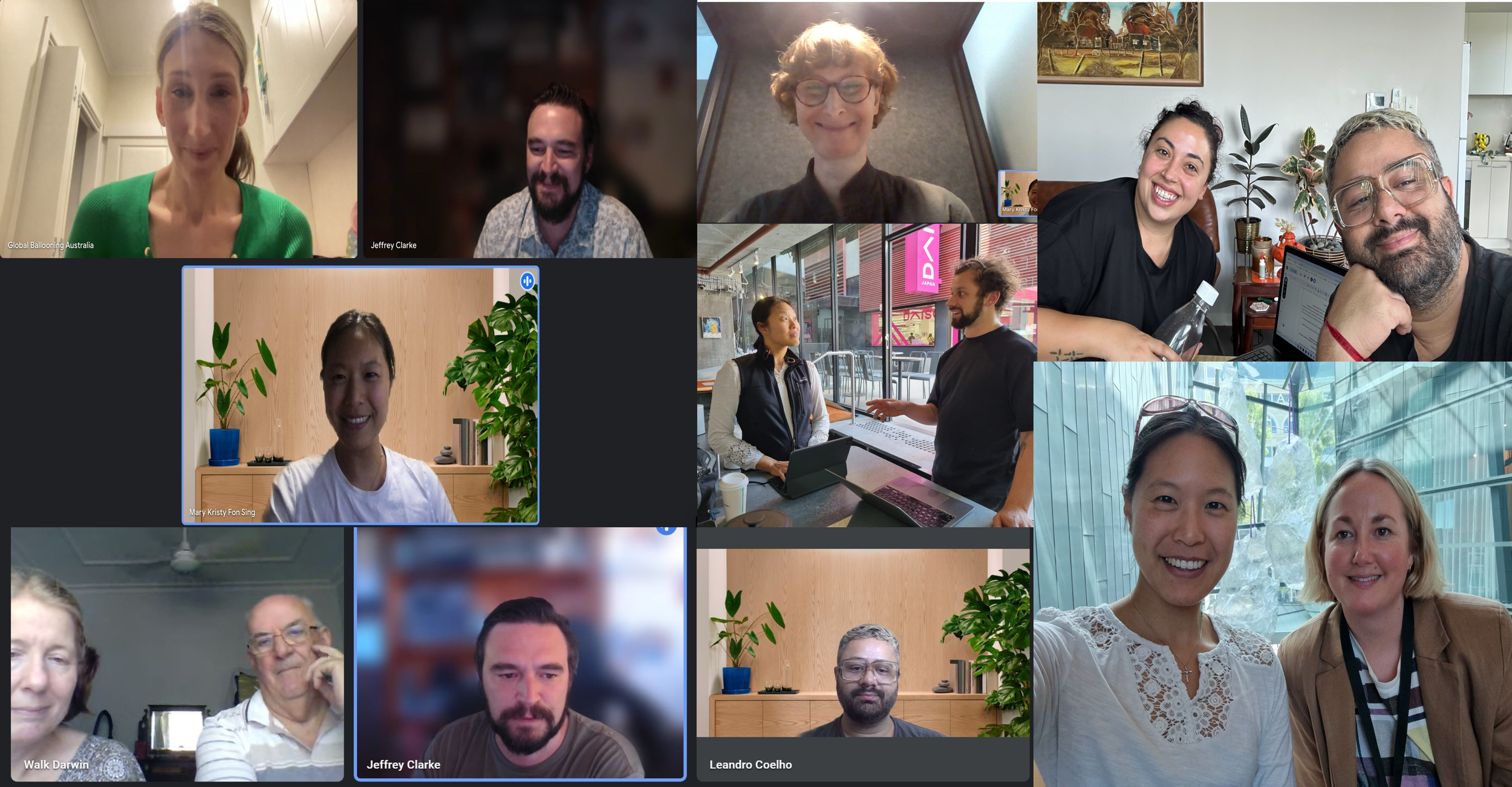

Affinity Mapping Insights
Affinity mapping our user interview insights brought forwards:
1. What the users’ businesses and organisations aimed to achieve
2. The reasons for working on implementing accessibility and inclusion practices
3. How the users and their organisations kept in the know of the standards of practice for implementing accessible experiences
4. How the users and their organisations proceed in taking action to implement
User pain points
Further affinity mapping insights were that:
⚠️ Inflation and the cost of living are negatively affecting business growth
⚠️ It is difficult to receive funding or lack of buy in from stakeholders to develop accessibility and inclusion practices
⚠️ Communicating / marketing to customers the reason for the cost of services is difficult
Empathy Mapping
The affinity map also revealed strong pattern contrast between large and small users organisations. The team therefore delved deeper into synthesising the research findings by using empathy map which allowed to create two personas.
The primary persona revealed to summarise the strongest patterns of the affinity map and therefore the team decided to work towards designing a solution for that persona while backlogging the secondary persona for this project.
Click on the above empathy maps to view 👆🏻
Click on the journey map to view 👆🏻
Meet Charlie:
Their journey & problem
Charlie’s Main Problem
Charlie needs specialised information to help advocate the Access inclusion practices so that the business can see the tangible value that these services provide.
To come up with a solution to Charlie’s problem, our stakeholders were invited to ideate with us over the following
How Might We:
“ HMW showcase on GAA website that the specialised business services provided will have tangible outcomes that align with Charlie’s organisation’s needs? “
3. Product Development & Testing
From Imagination to Prototypes
Ideation
To generate creative and innovative solutions to Charlie’s problem, the client’s team and our UXD team collaborated on crazy 8s. Different solutions were discussed and the recurring ideas were to highlight:
GetAbouAble’s Case Studies to enable users to build confidence in the company’s standards of service
Specific services that meet users’ specific need for consultancy services
GAA team and approach to build users’ trust in the company
Better use of content strategy for imagery, videos and UX Writing for website users’ engagement with GAA mission and values
Deciding on the Prioritised Features
Owing to the sprint nature of this project, the UXD team mapped out an effort-impact matrix to decide on our prioritised work focus and we agreed on the following:
Showcasing Case Studies
Highlighting specific services
Featuring the GAA team and their approach.
Top Navigation Structure
Optimised UI with Visual cues
Wireframes and Prototypes
Empowered by the research findings and synthesis, mashup of creative ideas and prioritised solutions for Charlie’s user journey, the UXD team developed a wireframe sketch into a mid-fidelity prototype.
Following usability testing of the mid-fidelity prototype, iterations were made and a high-fidelity prototype was finalised and presented to the client.
Jump to Prototypes
1st Prototype and Usability Testing

1. Highlighting Case Studies on the 1st prototype website


2. Highlighting Services
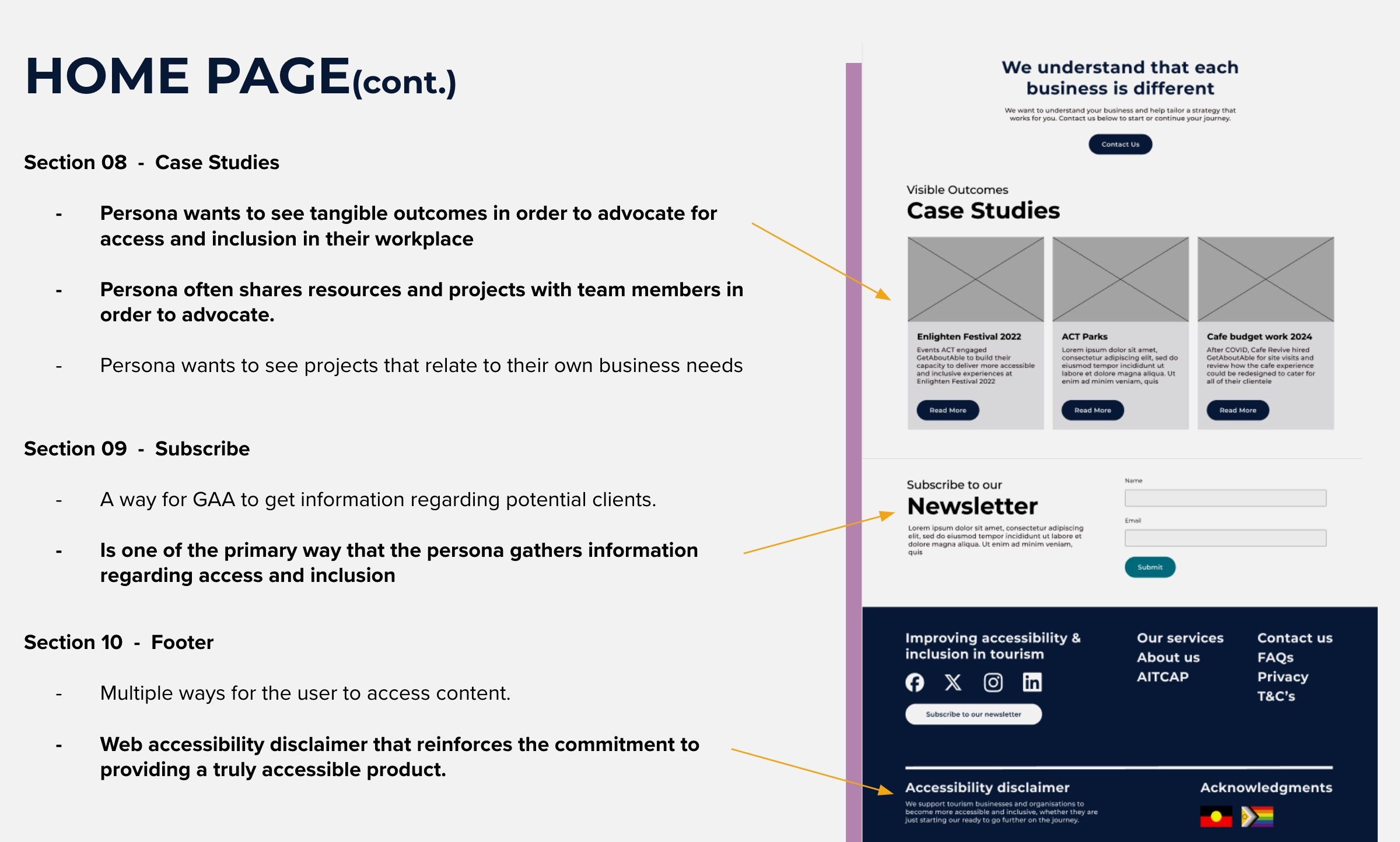
3. Information Architecture: UI and visual cues


4. Featuring GAA team and their Approach

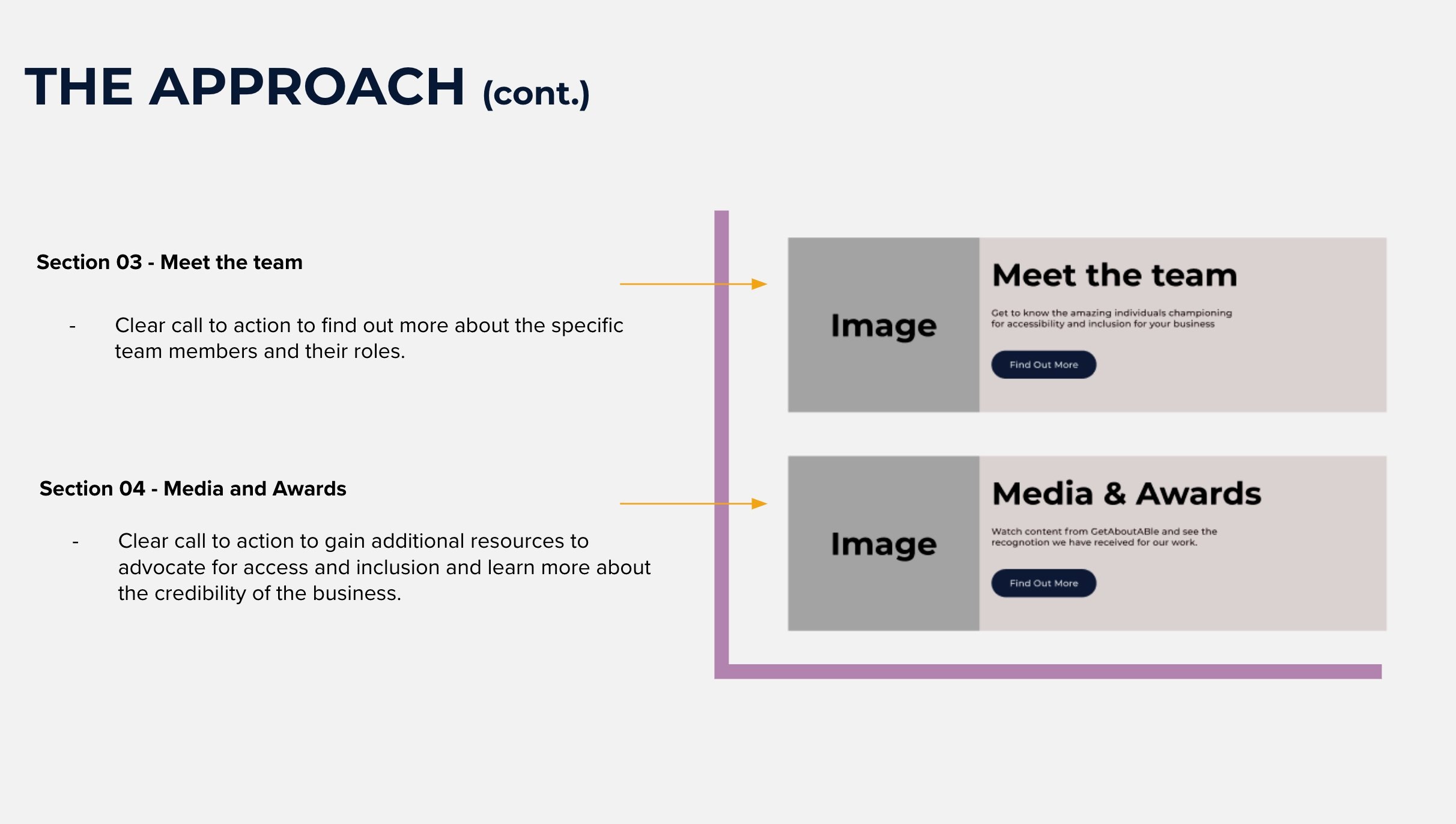
4. Featuring GAA team and their Approach (cont.)


5. Top Navigation Structure

Usabitility Testing
9 participants from the original user interviews and recorded the following metrics:
Time to completion of a series of instructed tasks
The user task flow of the above tasks
Likert Scale
On a scale of 1-10, 1 being the hardest and 10 the easiest, how easy or hard it to perform all the tasksQualitative feedback from a series of specific questions
Click on the above testees instructions to view 👆🏻
Usabitility Test Findings
1. Time to completion
All individual tasks were executed under 45s except for 1 testee performing task 1
Task 1, 2 and 3 involved the user to research about GAA’s services and background to feel confident about GAA’s standards of practice to solve the tasks given. These were executed and completed within 45s.
2. User task flow
There was consistent overall behaviour and navigation patterns.
Click on the above affinity maps of testees’ feedbacks to view 👆🏻
3. Likert scale
On a scale of 1-10, 1 being the hardest and 10 the easiest, how easy or hard it to perform all the tasks, 6 out of 9 users rated the tasks 7/10. Three of them rated the tasks at 9/10.
4. Qualitative feedback
Users found the layout clear, bold and easy to navigate
Users recommended improvement of the UX writing and more personalised GAA media/ photos
Users had a clear understanding of what GAA offers
3/9 users reported they would be interested to work with GAA after testing of the prototype owing to their testing experience
1 user ideated that there may be potential for further service development
Insights
Strategic imagery and media would help to reinforce GAA social proof and user engagement
UX writing is crucial to make the user feel that they are enquiring and hiring the right service
4. Product & Recommendations to Client
Final Prototype
The UXD team developed a high-fidelity prototype of the new website from the wireframe sketching, mid-fid prototype and usability test findings. The product was then presented to the client along with recommendations for future research and procedures following launching, should the proposal be approved.
View the homepage of prototype website 👆🏻
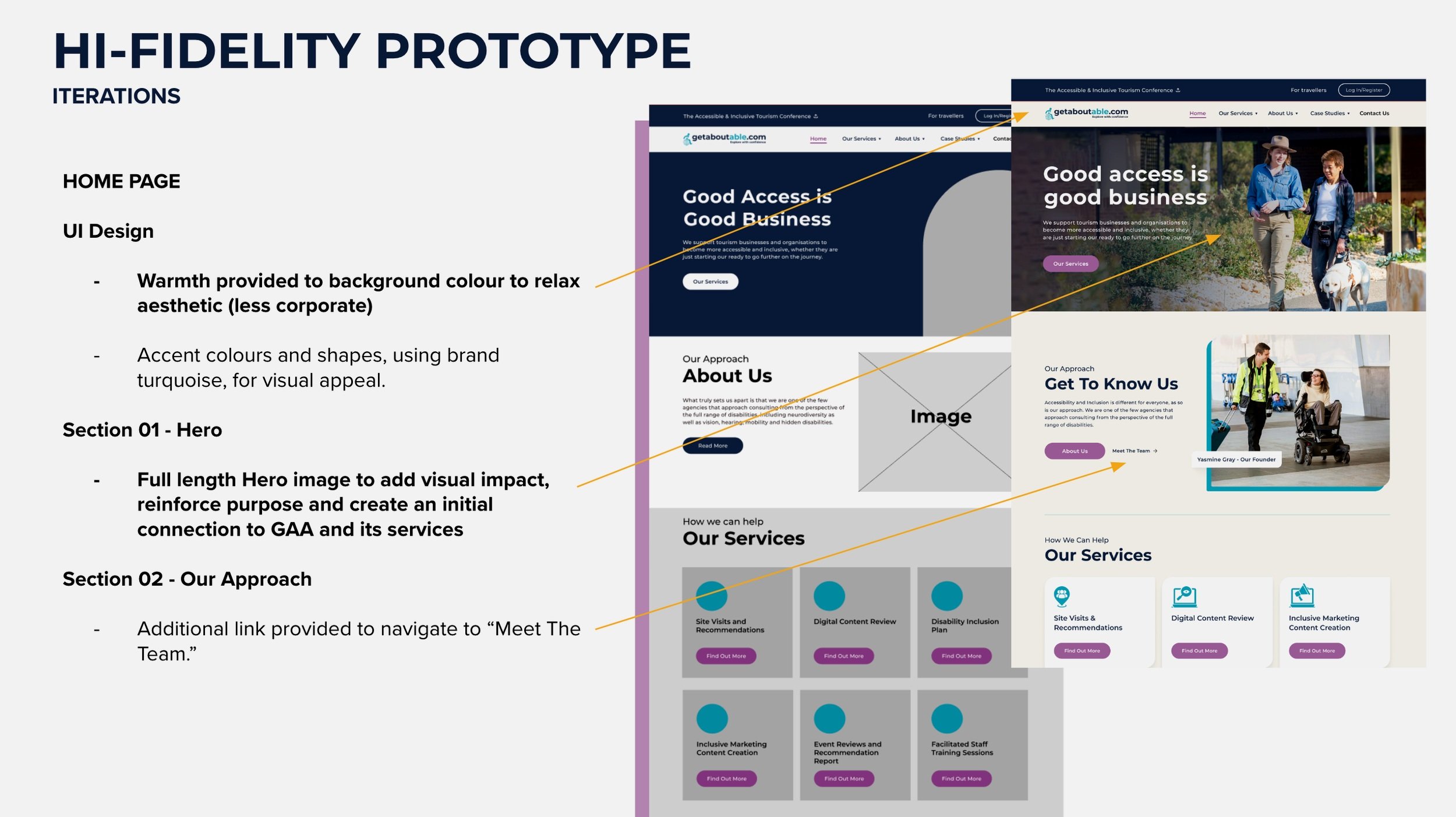
1. Iterations made to Home Page


2. Iterations made to Specific Service Page


3. Highlighting GetAboutAble unique event

UXD Solution Analysis
-
The MVP is the consolidated information and features provided on the Home Page.
By consolidating the most relevant features based on our research, the Home Page now provides a comprehensive view of the key details required by users to enable them to navigate with confidence to the relevant pages to find the specific offerings they need and to verify GetAboutAble credibility in the market.
-
The final prototype was based from the extensive UX research with the goal to shift the focus from GetAboutAble B2C to B2B services, and to increase qualified connections through the website. The product brings the following benefits to the user and client.
-
Clear understanding of the services provided as a result of:
UX writing and content strategy
Focused and concise break down of services
Reduced cognitive load through UI design
Ability to feel aligned and connected with GetAboutAble from highlighting:
Case Studies
GAA work Approach, their mission and values
Strategic use of photos and videos to further emphasise the strength of the team and business mission and values.
-
Quality time Spent on site and focus on GetAboutAble specialised services by:
Realigning the website purpose
Providing concise and directed information which lead to increased time on site and decrease in bounce rate
Increased User Confidence by:
Providing transparent "About Us" information and imagery build trust and credibility with potential clients, leading to a positive reputation in the industry and attracting more business through word-of-mouth referrals.
Increased Client Conversion by:
Clear, detailed case studies showcasing successful outcomes of consulting services can help potential clients understand the value GAA provide, leading to higher conversion rates.
Recommendations to the Client
Usability Testing of 2nd prototype
Verify whether the UX writing used is user friendly
Confirm tasks are achieved with lesser time and increased Likert Scale score of overall tasks
Assess whether a search tool is important to users
Include users with impairments in the cohort of testers
I recommended an A/B testing of the future and original website to assess which design yields the best results.
Metrics Using Google Analytics
Should the prototype website be launched, to ensure that it allows for increased qualified connections through the website, therefore boosting commercial outcomes, I recommended GetAboutAble to assess the following metrics through Google Analytics :
Views per user of specific services pages
Average engagement
Event Count of:
1. Contact form use
2. About us page visit
3. Meet the Team page visit
4. Navigating to Services Page from Case Studies Page
Content Strategy
Use of professional tailored imagery and media to strengthen brand and create increased sentiment engagement with user
Document future case studies to strengthen client’s position in the market
Develop a Resources Page - Media, Blog, lead magnet (free resources)
Attend to audit accessibility issues and implement an accessibility tool plugin (e.g. One Click Accessibility for WordPress) to highlight the client’s mission to service accessibility and inclusion practices
Marketing Strategy/ Product Development
Additional artefacts that came out of the UX research pertained to business opportunities for GetAboutAble and these were:
Research and development of the secondary persona, and products aligning with their needs
Attending to the cost pain points - we recommended the client to assess the benefits of instalment plans and highlighting low cost projects, for example
Geographical research to reach beyond the national market and recruit international test participant if budget permits
5. Challenges, Personal Growth
&
Skills Implemented
During this time, the team encountered challenges that we overcame with focus, grit and collaboration:
1. The struggle to recruit busy, time poor users for research ↓
2. Juggling Act: Team Coordination and Time Mastery ↓
3. We are students, not subject matter experts ↓
The project lasted for 5 weeks and key milestones were:
1. inception
2. in-depth research
3. sprint design project work and usability testing
4. presenting our project work and final prototype to the stakeholder
1. The Struggle to recruit
busy, time poor users for research
💥 Considering the project's business nature and objectives, the team aimed to interview at least 30 key decision-makers and managers. However, these users often have limited time and may be less inclined to participate in a student project that doesn't directly benefit their organisations.
💥 By the second week of the project, outreach efforts to nearly 50 users and businesses resulted in less than 15 agreeing to participate. Despite conducting guerrilla user research, engagement from local cafes was limited, with only 27 out of 119 contacted businesses participating. Consequently, user research was concluded midway through the project to ensure adequate time for development and testing.
✅ Despite challenges in gathering sufficient unbiased insights within the timeframe, the team collaboratively analyzed our findings and made informed decisions to guide the development of our prototype.
2. Juggling Act:
Team coordination and time mastery
💥 With two of us working part time and one full time during this remote part time course, it was testing for the team to:
- find mutual times to meet remotely outside the course contact hours
- contact users for user research during working hours
- progress collaboration work swiftly
✅ Thankfully, with the use of team coordination, time management and open communication, using Gantt Chart, Kanban board, stand-ups and minutes at the start and after every meeting respectively, we were able to keep track of the work in progress and completed, therefore complete our project in good time.
3. We are students, not subject matter experts
The team gelled well by each one of us contributing and uplifting one another thanks to each's previous skills and background - it was exciting to see the team and work coming together.
✅ My acute interest in organisation and time management allowed me to provide guidance in each sprint by monitoring our Gantt chart, Kanban board and time boxing our collaboration work.
✅ Additionally, my proficiency in Figma facilitated tasks such as wireframing, prototyping of the website product, usability testing and making iterations for our second prototype. To address uncertainties and leverage the new features in Figma released in 2023, I engaged with the Figma community, YouTube tutorials, received guidance from mentors and collaborated with my teammates.
✅ By collaborating with a team mate from a professional graphic design background, I developed a better appreciation of UI design, for example:
- appreciating that a warm colour choice for the high-fidelity prototype website background can create a more relaxed aesthetic
- use of accent colours and shapes enhances visual appeal
- using strategic imagery and media, rather than stock photos, reinforces a business’s social proof and brand identity
✅ Overall, this journey highlighted the value of teamwork, adaptability, and continual learning in achieving project objectives.
Bonus highlight of project:
That feel good moment
My team mate I were able to conduct separately site visits during our user research, and noted that some of organisations we recruited already implemented a variety of physical accessibility measures in their goals to provide universal experience to their customers.
Some considerations included:
Noise level reductions
Colour contrast use
Provision of space to navigate in the venues
Ramp installations
Large print font labels
During the site visits, it was uplifting to witness individuals with diverse mobility capabilities participating in and enjoying the same events and experiences. This underscored the community's dedication to inclusive and universal design—an effort I find both vital and inspiring.
Drawing from my physiotherapy career where I have worked closely with patients spanning various ethnicities, educational levels, and cultural backgrounds, all grappling with mobility and other physical challenges, I aim to now also leverage the skills I learned from this project to contribute to accessible and universal design in UX.

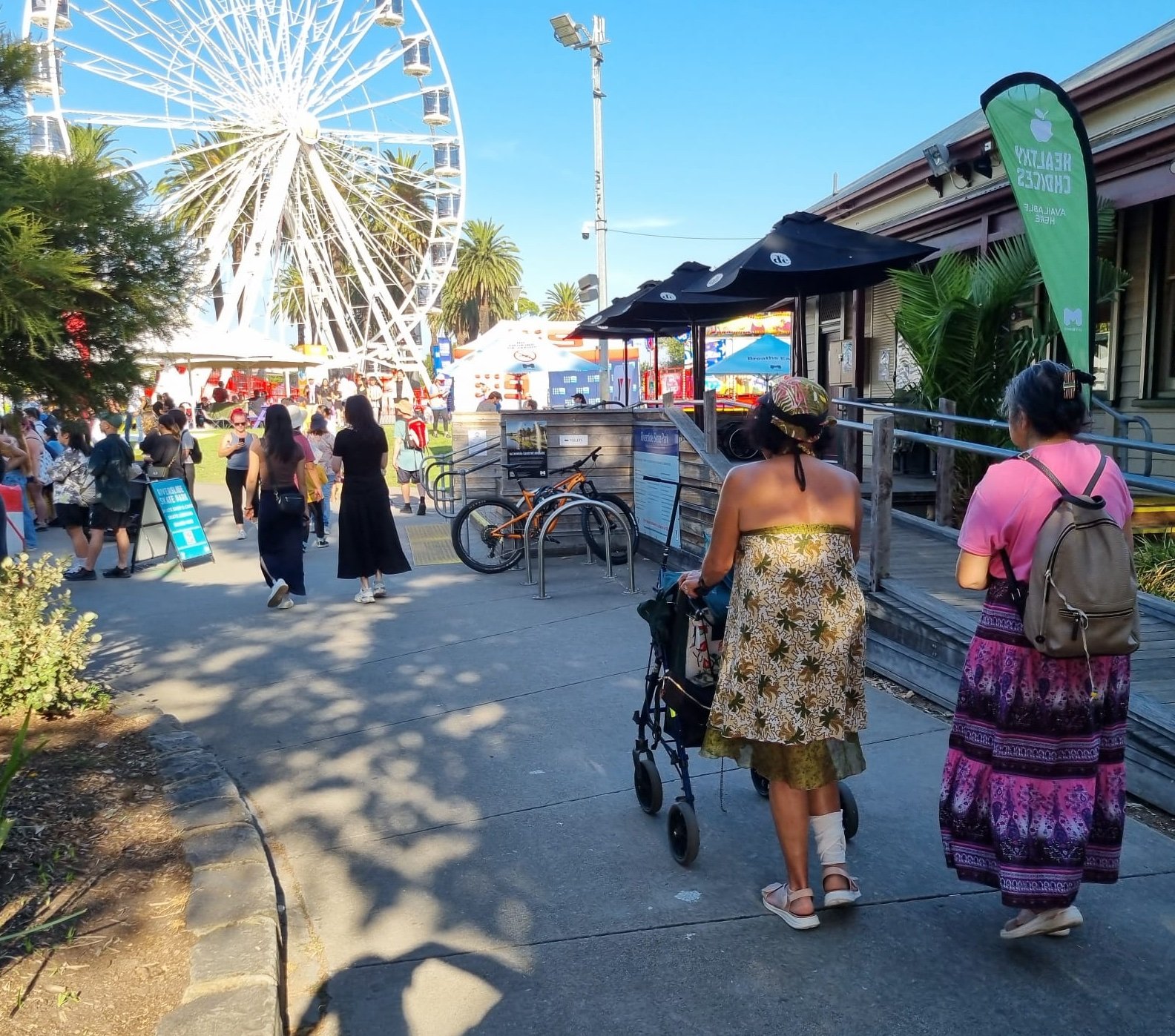




This project was an amazing opportunity for me
to discover and define my career goal :
to contribute meaningfully to businesses and users alike in championing inclusive and universal design principles.
I hope you enjoyed this case study























